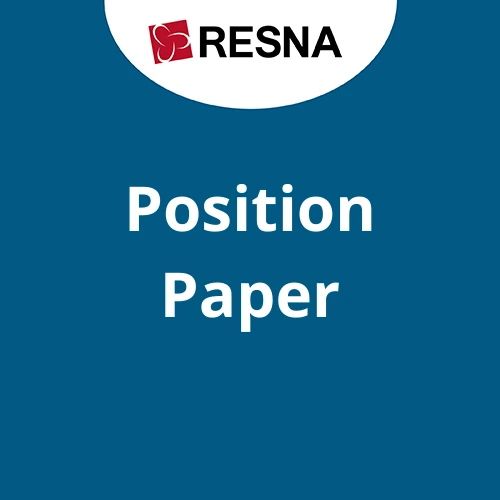- Clinical Research
- Research Library
- RESNA position paper on manual wheelchairs
RESNA position paper on manual wheelchairs

RESNA’s new position paper on manual wheelchairs in the Assistive Technology Journal, August 2023. The update emphasizes the importance of individualized configuration, set-up and component selection.
RESNA’s (Rehabilitation Engineering and Assistive Technology Society of North America) new position paper on manual wheelchairs (MWC) published in the Assistive Technology Journal in August 2023.
“It is recommended that wheelchairs which are customizable, including configuration and adjustability while minimizing overall weight, are the only acceptable choice for individuals who rely on MWCs for independent manual mobility, regardless of propulsion methods and across multiple care settings and diagnoses.”
A voluntary work group updated RESNA’s previous position paper on manual wheelchairs from 2012. Permobil’s Jennith Bernstein was a member of this working group. Following an extensive process including a scoping review of the literature, expert review, open comment period on the RESNA website, board of directors' approval, and finally peer-reviewed, the paper has been published in the Assistive Technology Journal.
Please note: While ultralight manual wheelchairs is a term that is commonly used in the United States, as you read you will notice that the information and research included applies to all “active” manual wheelchairs where there is an individually configurable frame and adjustable rear axle.
The purpose of this RESNA Position Paper is to provide evidence from the literature and share typical clinical applications supporting the application of ultralight* manual wheelchairs to assist practitioners in decision-making and justification of wheelchair recommendations.
The intention of the updates to the RESNA position paper were to emphasize the importance of individualized configuration and set-up as well as component selection.
The position paper covers:
- Increased evidence on factors that impact rolling resistance, ultimately informing how to reduce mechanical effort required to propel
- Increased attention to alternative propulsion styles, emphasizing that no matter how a person propels their chair, with the legs, one arm, both arms, that configuration and frame balance matter.
- Additional attention to pediatric and older adult populations
- Although evidence is sparce, the influence of the MWC on skills and participation were addressed
* While ultralight manual wheelchairs is a term that is commonly used in North America, the information and research included applies to all “active” manual wheelchairs where there is an individually configurable frame and adjustable rear axle.
RESNA supports the work of clinicians, researchers, educators, and engineers working in the field of assistive technology.